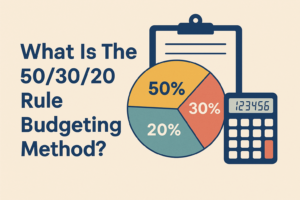Set up your finances to grow on autopilot using automation tools, smart apps, and proven strategies that help you save and invest without lifting a finger.
- Why Automating Finances Is A Game Changer
- The Psychology Behind Automatic Wealth Building
- Step-By-Step Guide To Automating Your Savings
- Automating Your Investments The Smart Way
- Best Tools And Apps For Financial Automation
- Building A 3-Layer Automation System
- Tips To Supercharge Your Automation Strategy
- Common Pitfalls To Avoid
- Why Automation Creates Wealth Without Sacrifice
- Subscribe To My Newsletter And Get Inspired To Transform Your Life For The Better
Why Automating Finances Is A Game Changer
In a world filled with distractions, information overload, and endless spending opportunities, manually managing your savings and investments is a recipe for inconsistency. Most people intend to save or invest regularly but fall short when emotions or temptations kick in.
That’s where automation changes the game. By setting up automatic transfers and investment contributions, you remove the need for willpower, eliminate forgetfulness, and lock in financial discipline. It’s the easiest way to consistently build wealth without relying on motivation or memory.
When you automate your money, you’re not just saving time — you’re also creating a financial system that works even while you sleep.
The Psychology Behind Automatic Wealth Building
One of the biggest barriers to wealth is not lack of money — it’s behavior.
Automation leverages two key psychological principles:
- Decision fatigue – By making fewer financial decisions manually, you’re less likely to make bad ones due to stress or exhaustion.
- Out of sight, out of mind – When money automatically moves to savings or investments before you see it, you’re less tempted to spend it.
This approach mirrors what behavioral economists call “nudging” — gentle, invisible pushes that guide better choices. You’re essentially designing a system where good financial behavior happens by default.
Step-By-Step Guide To Automating Your Savings
Let’s break down how to set up a savings system that runs itself:
Step 1: Open A Dedicated High-Yield Savings Account
Choose an account separate from your main checking account — ideally one that pays at least 4% interest. Good options include:
- Chase Sapphire Savings
- Ally Bank High-Yield Savings
- Marcus by Goldman Sachs
Avoid using the same bank as your checking account. The more friction between you and your savings, the less likely you’ll dip into it.
Step 2: Set An Automatic Weekly Or Biweekly Transfer
Log into your banking app and set up a recurring transfer — even if it’s just £10 a week. It’s about consistency, not size.
Tip: Time your transfers for the day after payday. This simulates a lower income and forces you to live on less while building your savings.
Step 3: Create Multiple Sub-Savings Goals
Apps like Monzo, Revolut, or Plum allow you to create labeled pots for different goals:
- Emergency fund
- Holiday fund
- Car maintenance
- Gifts or events
By naming and dividing your goals, you reduce the temptation to raid your savings for unrelated expenses.
Automating Your Investments The Smart Way
Once your savings are in motion, it’s time to make your money work harder through investment automation.
Step 1: Choose A Robo-Advisor Or Platform With Autopilot Features
Robo-advisors manage your investments based on your risk tolerance and goals — all with minimal fees. Popular UK-friendly options include:
- Nutmeg
- Wealthify
- Moneyfarm
- Vanguard LifeStrategy funds (manual setup with auto-payments)
These services invest your money into diversified portfolios and rebalance them as needed — no action required on your part.
Step 2: Set A Monthly Direct Debit To Your Investment Account
This is the magic move. Link your current account and automate monthly transfers (e.g., £100 on the 1st of each month) directly into your investment account.
You’ll take advantage of pound-cost averaging, which reduces the impact of market volatility over time.
Step 3: Automate Tax-Efficient Accounts Like ISAs
Set up an Investment ISA or Stocks & Shares ISA and automate your contributions. These accounts allow tax-free growth and are ideal for long-term goals like retirement, property purchases, or financial freedom.
Best Tools And Apps For Financial Automation
You don’t have to do all of this manually. The right tools make automation simple and smart.
For Savings
- Monzo – Set up salary splitting, scheduled pots, and roundups.
- Plum – Uses AI to calculate how much you can safely save and moves it for you.
- Chip – Automates savings and offers interest-earning accounts.
For Budgeting
- Emma – Tracks all your accounts in one dashboard and flags unnecessary subscriptions.
- Money Dashboard – Helps you categorise spending and set savings goals.
- Snoop – Finds savings across your bills and spending habits.
For Investing
- Nutmeg – Fully automated investing with portfolios for ISAs and pensions.
- Moneybox – Rounds up spare change and invests it for you.
- Freetrade – Ideal for DIY investors looking to automate regular stock or ETF buys.
Building A 3-Layer Automation System
The most effective system involves automating across three levels:
- Income to Savings – A direct, fixed portion goes to your high-yield savings each payday.
- Savings to Investments – A second automation pushes part of your savings into your investment account.
- Expense Monitoring and Budgeting – Apps analyse your spend and alert you to inefficiencies.
This structure guarantees you pay yourself first, grow your money automatically, and stay in control of your cash flow.
Tips To Supercharge Your Automation Strategy
Want to go beyond the basics? Try these next-level strategies:
- Roundups – Use apps that round up your purchases and save or invest the difference.
- Salary Splits – Some employers allow your paycheck to be split into multiple accounts — use this to bypass temptation.
- Annual Automation Review – Once a year, increase your automated contributions by at least 5%. It compounds massively over time.
- Zero-Based Budgeting – Give every pound a job. Automate transfers so that no money is left idle.
Bonus: Use a visual dashboard like Notion or Google Sheets to track progress across all automation systems — this keeps motivation high without being hands-on daily.
Common Pitfalls To Avoid
Automation isn’t magic unless you avoid these traps:
- Setting and forgetting forever – Your income and goals change. Review automations every 6 to 12 months.
- Not separating savings from spending – If your emergency fund is easy to access, you’ll use it for takeaways.
- Overcomplicating it – Start simple. Automate one thing, then layer on complexity.
Why Automation Creates Wealth Without Sacrifice
Here’s the truth: most people don’t get rich because they’re disciplined. They get rich because they build systems that make the right choices automatic.
Automating your savings and investments turns wealth building from a chore into a routine. You’ll never have to wonder if you remembered to save this month. You’ll never have to time the market or fight spending urges. It’s all done for you — by design.
Over time, those £50 monthly contributions turn into thousands, and your investments quietly compound in the background.
And the best part? You’re free to focus on living life, not managing money.
Learn What I’m Using To Build Online Passive Income Streams By Clicking Here
I do not provide personal investment or financial advice and I am not a qualified licensed investment advisor. I am documenting my online investment and financial journey and what’s working for me. Click Here to read disclaimer.
Subscribe To My Newsletter And Get Inspired To Transform Your Life For The Better
“I may earn commissions as an affiliate from sponsored links within this post”






